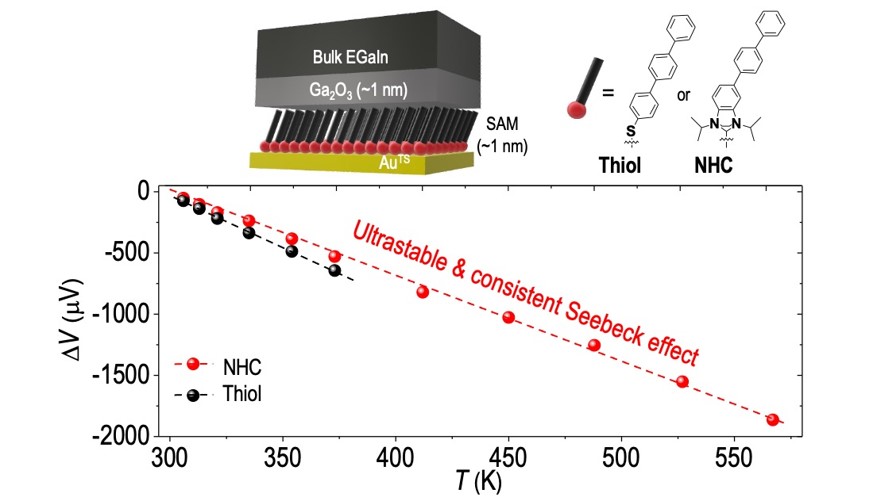Molecular junctions can be miniaturized devices for heat-to-electricity conversion application, yet these operate only in mild thermal environments (less than 323 K) because thiol, the most widely used anchor moiety for chemisorption of active molecules onto surface of electrode, easily undergoes thermal degradation. N-Heterocyclic carbene (NHC) can be an alternative to traditional thiol anchor for producing ultrastable thermoelectric molecular junctions. Our experiments showed that the NHC-based molecular junctions withstood remarkably high temperatures up to 573 K, exhibiting consistent Seebeck effect and thermovoltage up to approximately |1900 μV|. Our work advances our understanding of molecule–electrode contact in the Seebeck effect, providing a roadmap for constructing robust and efficient organic thermoelectric devices.

https://pubs.acs.org/doi/full/10.1021/acs.nanolett.2c00422
 Li-ion Intercalation, Rectification, and Solid Electrolyte In...
Li-ion Intercalation, Rectification, and Solid Electrolyte In...


















